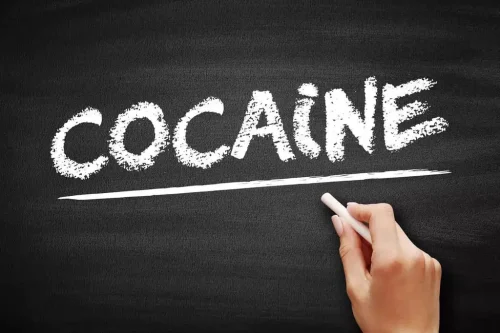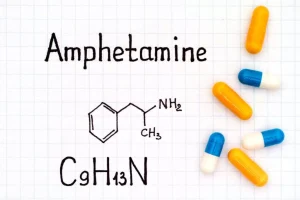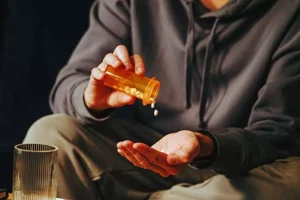
By clicking “Submit,” you certify that you have provided your legal name and phone number, agree to the terms and conditions and privacy policy, and authorize Addictionresource to contact you. You consent to receive SMS notifications and promotions from Addictionresource. Seeking professional assistance, attending Alcoholics Anonymous meetings, or accessing other support networks can provide invaluable help to overcome alcohol use disorder. Prolonged and sustained alcohol use leads to irreversible dysfunction and the mortality rate for ACM can be as high as 50% in the following four years after diagnosis. Osteoporosis occurs when a person’s bones decrease in density and become more brittle and prone to breaking. Although the disorder is most often diagnosed in elderly individuals, it can occur in younger individuals as well.

What Are the Risk Factors for Alcoholic Cardiomyopathy?
Mortality in ACM is related to the progression of what is alcoholic cardiomyopathy heart failure and malignant arrhythmias 58,65. In long-term follow-up studies, a mortality rate of 10% of patients/year has been observed in the group of patients with persistent high-dose ethanol consumption 19,52. By making these choices, individuals can lower their risk of developing alcoholic cardiomyopathy and other alcohol-related health concerns. For further resources on managing health, consider exploring our articles on character defects and what does fentanyl smell like. Managing alcoholic cardiomyopathy requires careful attention to lifestyle choices and ongoing support.
Acute reversible left ventricular dysfunction secondary to alcohol
They commonly include fatigue, shortness of breath, and swelling of the legs and feet. The association between alcohol-induced cardiomyopathy and myocarditis is controversial. In one six-patient study (12) focusing on alcoholic cardiomyopathy, the surprising histological findings on endomyocardial biopsy of two patients was found to be myocarditis with lymphocytic infiltration in association with myocyte degeneration https://ecosoberhouse.com/ or focal necrosis. However, no other biopsy study of patients with presumed alcohol-induced cardiomyopathy has found this. It is likely that those two patients were incorrectly labelled with alcohol-induced cardiomyopathy. Earlier studies by Puszkin and Rubin (10) were the first to suggest that alcohol had effects on the regulatory proteins, troponins or tropomyosins.
- However, any further damage due to alcohol abuse is also negated if one stops drinking.
- It is estimated, approximately 21-36% of all non-ischemic cardiomyopathies are attributed to alcohol.
- People who misuse alcohol for a long time are more likely to develop physical dependence and pharmacological tolerance to alcohol.
- The primary treatment for ACM is complete abstinence from alcohol, which may require a combination of behavioral therapy and medication.
AMOUNT OF ALCOHOL REQUIRED TO PRODUCE ACM
An echocardiogram performed within 24 h of admission and reviewed by two independent echocardiographers demonstrated severe global left ventricular systolic dysfunction, with an ejection fraction of 20% by modified Simpson’s biplane method. The left ventricle was not dilated, and the right ventricle had normal function. The end-systolic dimension was 4.1 cm and the end-diastolic dimension was 5.0 cm (Figure 1). A 48-year-old woman presented to the emergency department with confusion and shortness of breath. She admitted to an eight-year history of the ingestion of more than 600 mL of vodka per day.
- Symptoms include gradual onset worsening shortness of breath, orthopnea/paroxysmal nocturnal dyspnea.
- Furthermore, there are conflicting data among studies regarding the prognosis of the condition, with some showing overall mortality near 60% and others showing a mortality rate of only 19% (Table 1).
- Therefore, the need to establish a more effective control on ethanol consumption has been repeatedly claimed 2.
- It was only after the recent significant increase in alcohol intake that the myocardial dysfunction became apparent.
- Cardiologists (healthcare providers who specialize in the heart) use this minimally invasive procedure to treat hypertrophic cardiomyopathy (HCM).
- Drinking large amounts of alcohol over many years can directly damage the heart muscle.
Patients may see improvements in symptoms like swelling, fatigue, and shortness of breath within a few weeks, with long-term use helping prevent further heart damage. After a person with AUD completes a rehab program, they may need aftercare support. Many treatment programs offer ongoing support groups that continue to meet and provide peer support or recommend attending community support groups like Alcoholics Anonymous (AA). If you have alcoholic cardiomyopathy, you may benefit from attending group support meetings for people struggling with AUD and subsequent ACM. Alcoholic cardiomyopathy may not cause any symptoms until the disease becomes advanced.

Cardiac Catheterization
It’s important to be honest with your doctor about the extent of your alcohol use, including the number and amount of drinks you have each day. This will make it easier Sobriety for them to make a diagnosis and develop a treatment plan. A repeat echocardiogram revealed normal left ventricular function, with an ejection fraction of 62% by modified Simpson’s biplane method.
Alcoholic Cardiomyopathy: Causes, Symptoms, and Treatment Options

Other deficiencies including nutritional such as thiamine or other toxic materials ingested may lead to additional concomitant complications. A doctor can guide someone to resources to help them quit drinking and can make referrals. A person may not be able to withstand the amount of exercise or activity as they had previously. We may be paid a fee for marketing or advertising by organizations that can assist with treating people with substance use disorders. While we are unable to respond to your feedback directly, we’ll use this information to improve our online help.
- In animal studies, loss of contractile proteins and defects in myocardial protein synthesis may partly explain the altered contractility.
- “That’s why it’s important to get an annual physical, to detect any heart issues as early as possible, and get imaging tests if needed.”
- These studies have demonstrated that acute alcohol ingestion directly reduces contractile protein synthesis in vivo by approximately 25%.
- Due to its significant toxicity, studies have avoided its direct instillation, as it produces indiscriminate cell damage even at low doses.
- As the pathogenesis of AC is complex, specific treatments focus on different targets.
Genetics may play a role in determining susceptibility to alcohol-induced heart damage. Some individuals may have a genetic predisposition that makes them more vulnerable to heart damage, even with lower alcohol consumption. Research is ongoing to understand the genetic factors contributing to alcoholic cardiomyopathy. The progression of alcoholic cardiomyopathy is often gradual but can accelerate if alcohol consumption continues. In the early stages, the heart may compensate for the damage, resulting in mild or absent symptoms.
